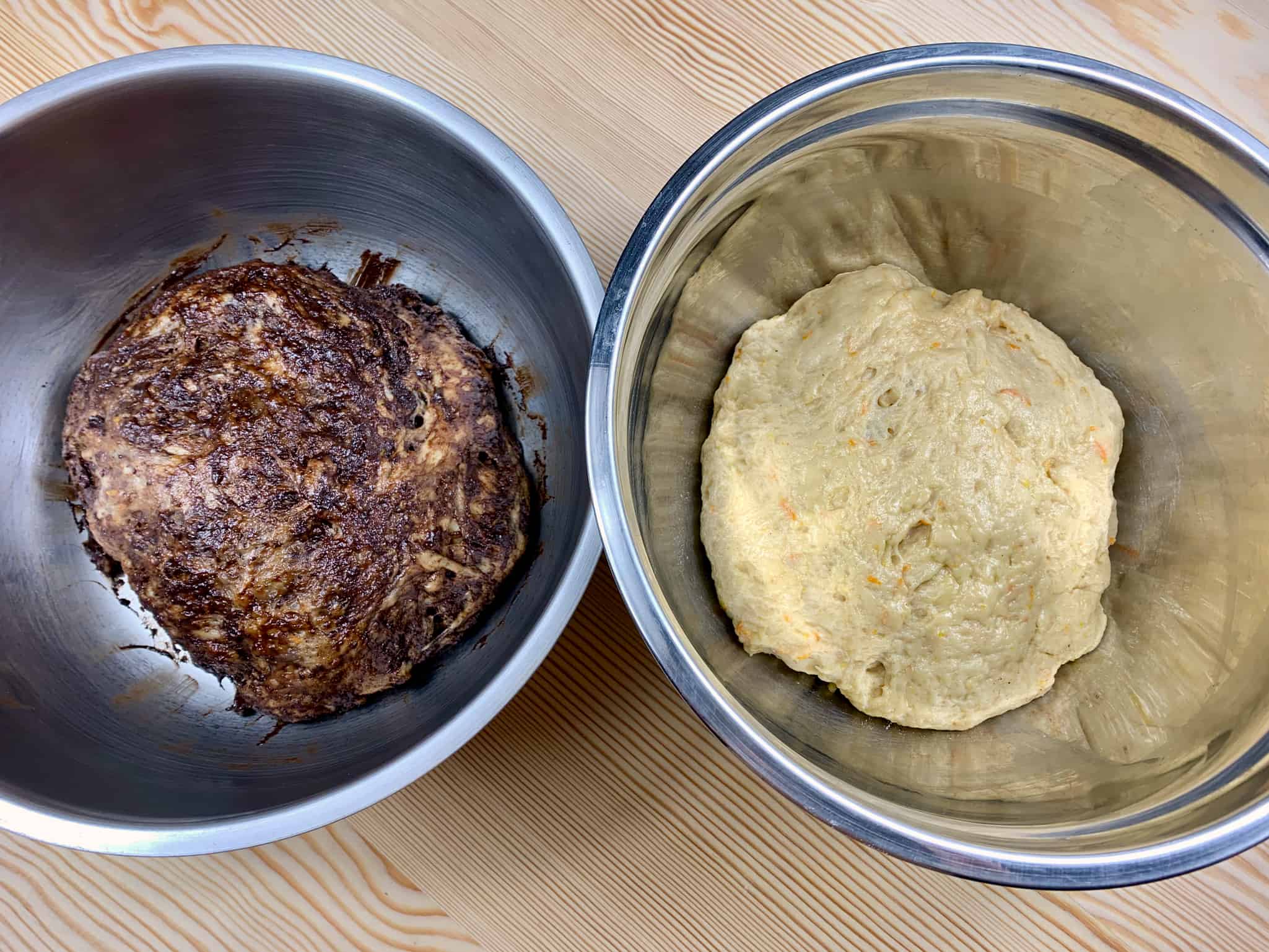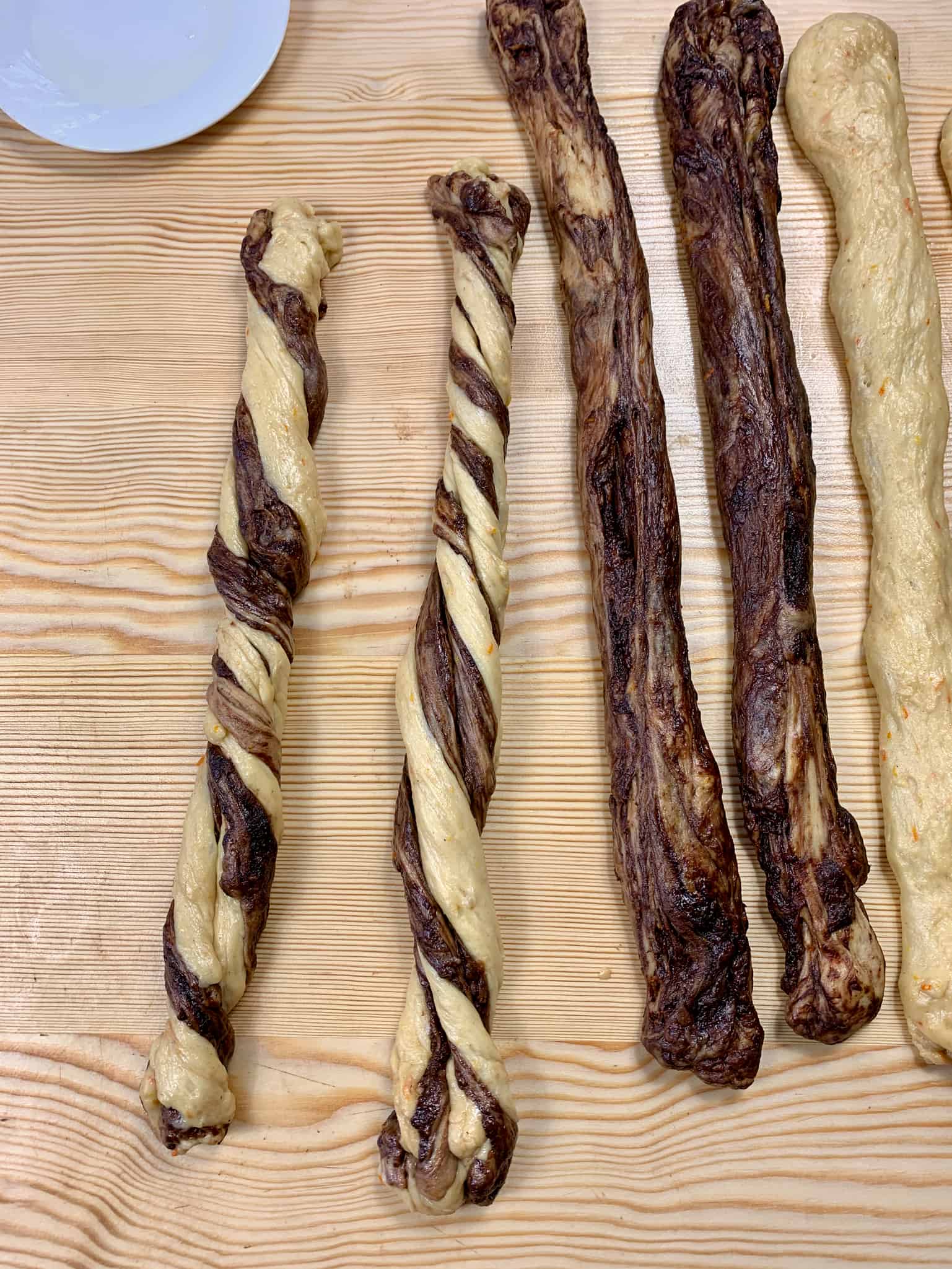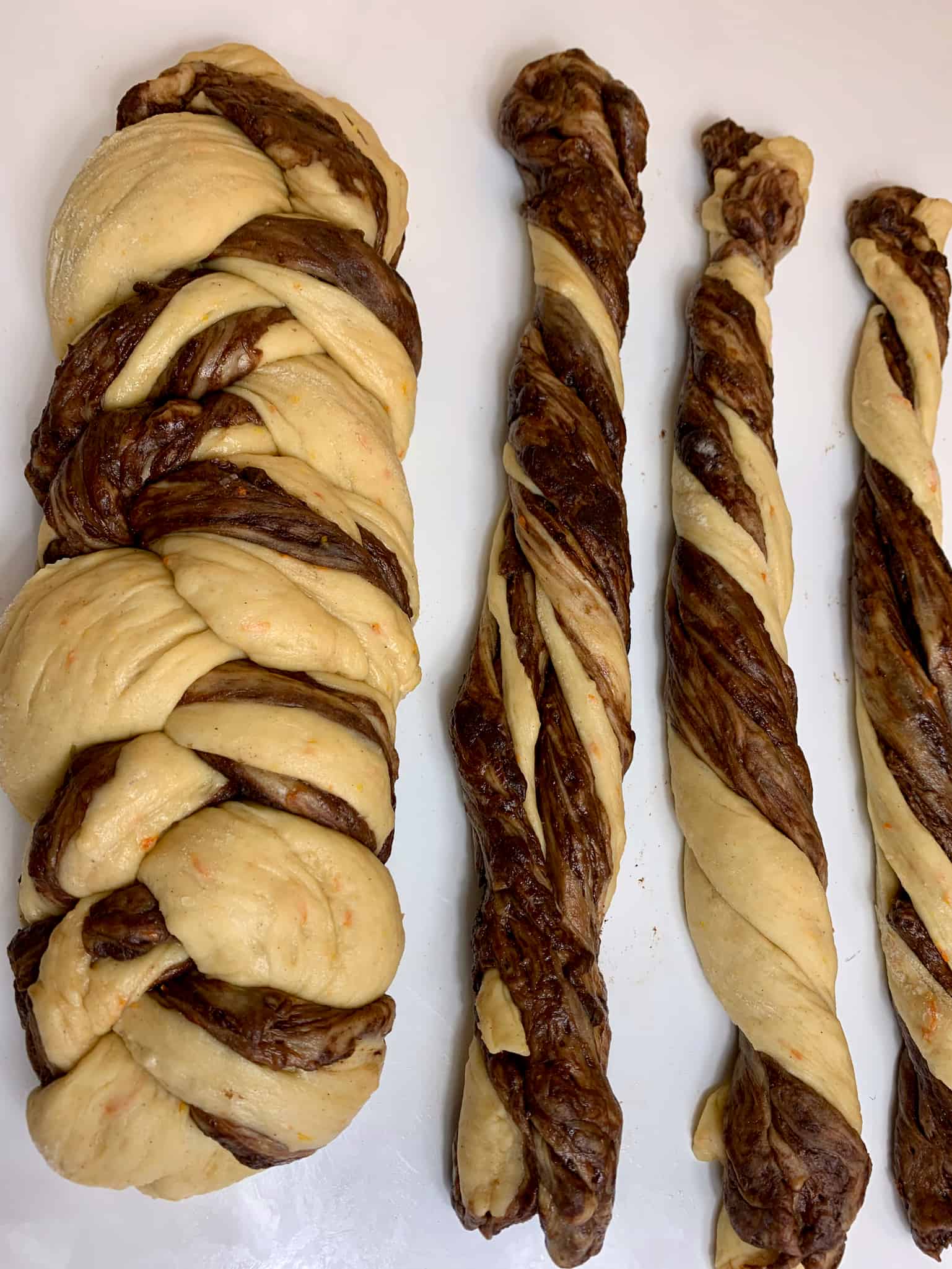Tsoureki is a sweet brioche type bread mostly prepared during the Easter Lent (Pascha). Tsoureki is so popular in Greece that it is prepared and consumed at any other time of the year too! This Greek Marble Tsoureki (Chocolate Easter Bread) recipe is a delicious chocolate twist to the original traditional Tsoureki recipe.

What are the ingredients for this Greek Marble Tsoureki (Chocolate Easter Bread)?
The ingredients for this Tsoureki recipe are universal to any Tsoureki recipe: strong flour, sugar, sunflower oil. The spices are also universal to Tsoureki and are: mahlab, black cardamon powder and vanilla drops. Some recipes call for mastic resin (Mastiha)in the Tsoureki recipe. I have not included this aromatic spice in this Greek Marble Tsoureki recipe as I wanted to focus on the chocolate instead. You can always add mastic resin if you wish in your recipe.
The added ingredient in this Greek Marble Tsoureki is of course chocolate. Pure chocolate and not just cocoa powder. The chocolate used in this recipe is dark chocolate with a cocoa content of 54%.
What do I need to be careful when preparing Tsoureki?
There are a few little secrets that you need to be aware of when preparing Tsoureki. The flour for Tsoureki needs to be strong flour with a protein content of at least 13-14%. Strong flour has high protein content and is the perfect flour for breads and loafs where a chewy consistency is desired. Baking goods with strong flour have a firm crust and a soft chewy and stringy interior.
Tsoureki proofing guide
Proofing and especially correct proofing are crucial to preparing a perfect Tsoureki. Here I share some proofing tips that I have learned through the years.
- Every Tsoureki recipe needs at least two if not three proving sessions, which need to be perfect. An over-proofed as well as an under-proofed dough will lead to disastrous results.
- Proofing requires a warm environment so that the dough can double in size. The ideal temperature for the dough to rise is 25-27C or 77-80.6F in the first proof and 30-35C or 86-95F for the final proof before baking.
- Always start by placing the dough into a bowl, wrapping it with cling film and covering it with a kitchen towel.
There are four different ways to give your dough that warm environment that it needs to prove:
Method 1:The most popular method is to wrap the bowl with blankets and leave it in a warm room for the desired amount of time.
Method 2: You can also proof dough in the oven. Simply switch on the oven so that the oven light is on. Place the dough in a bowl in the middle shelf of the oven. Place also an oven dish with boiling water in the bottom of the oven and let the dough rise. You can monitor the temperature with an oven thermometer. If you find that the oven loses the desired temperature, replace the boiling water in the oven dish with a new one.
Method 3: Another smart way for the perfect proofing, especially when it is cold outside, is to place the wrapped and kitchen towel covered bowl with the dough near a radiator or any other source of heating. This constant heat which will help the dough rise nicely.
Method 4: Finally, you may also try proving (proofing) with the use of an electric blanket. Yes, you heard right, with an electric blanket. Wrap the bowl with dough with cling film and cover it with a kitchen towel. Then place it on top of an electric blanket. Switch the electric blanket on low setting and as soon it reaches the desired temperature turn it off.
How do I achieve the perfect colour to Tsoureki?
The perfect Tsoureki has a light brown colour on the exterior. Simply baking this or any Tsoureki will not achieve this desired colour. The secret lies to the egg wash. The egg wash needs to be evenly brushed to the braided and proved Tsoureki just prior to baking time.
There are many variations of the egg wash. The simplest of all egg washes is to whisk one egg (yolk and white) with 1 tablespoon of water and is by far my favourite one. This gives the Tsoureki a light brown colour. For a dark brown colour, combine an egg yolk with 1 tablespoon of milk and ½ teaspoon of sugar and whisk. To achieve just a shiny exterior to your Tsoureki, combine an egg yolk and ½ teaspoon sugar.
How do I braid this Greek Marble Tsoureki?
Braiding and creating a marbled chocolate effect is not difficult. With my step by step my recipe you will end up with two doughs. One being the original, ‘white’ dough and the second dough being the one in which chocolate was incorporated.

Marble Tsoureki dough
On your work surface, roll out each dough and divide each dough ball in 3 strings. You will end up having 9 strings in total. From this step forward is easier to divide each string into 3 further thinner strings, ie 18 strings in total.

Marble Tsoureki strings
Now combine 3 strings of each dough, ie 3 from the original and 3 from the chocolate dough and twist them. Repeat until there are no more strings.

Marble Tsoureki strings and braided
How do I make this Greek Marble Tsoureki (Chocolate Easter Bread)?
Preparing Tsoureki (Easter Bread) should not be difficult. Here you can follow my steps to make this Greek Marble Tsoureki (Chocolate Easter Bread) to perfection. Start by dissolving the yeast into lukewarm milk along with a small quantity of sugar and small quantity of flour. Let the yeast mixture rest for 10 minutes, ie for the yeast to become activated. If you see that the yeast does not becomes bubbly, then it means that the yeast is not working. It is best to discard this mixture and get a fresh batch of yeast and repeat the process.
Whilst waiting for the yeast to activate, melt the butter and the chocolate in Bain-Marie. In a large saucepan heat the remaining milk adding the rest of the sugar and sunflower oil. Make sure the mixture does not exceed a 30C or 86F temperature. Remove the saucepan from the hob and add the eggs, mahlab, cardamon and vanilla drops.
In a large bowl, combine the yeast mixture with the mixture above and mix gently. Continue by gradually adding the flour. The dough will be quite soft like play-doh. Carry on by adding slowly the melted butter and knead until it is incorporated into the dough. Knead the dough enough until it does not stick to your hands.
Divide the dough into two equal parts and place one in another bowl. Add the melted chocolate in one of the doughs and knead. Knead for 2-3 minutes until the you achieve the desired chocolate marble effect in the dough.
It’s now time for the first proof. Cover each bowl with cling film and a kitchen towel and let the dough prove in a warm environment for 30-35 minutes. Continue by braiding the Tsoureki, place it in a baking dish and let it proof for the second time.
It’s now time for the second proof. The second proof should last 30-35 minutes. After the second proof, brush them lightly with the egg wash and bake the Tsoureki at 170C or 320F for 40 minutes.
Love Tsoureki?
My go to traditional Tsoureki recipe
If you love Tsoureki and chocolate as much as I do, then try these delicious Tsoureki buns
For a healthier, but still chocolatey Tsoureki, check out my
Love stuffed Tsoureki?I have you covered…
Love Spinach and Feta cheese?? Are you feeling adventurous? Why not combine the heathy and delicious Spanakotiropita flavours and create a savoury Tsoureki loaf.
Why not surprise your guests this New Year’s with Vasiltopita Tsoureki as per Politiki cuisine?
Love English puddings?
Got Tsoureki leftover?Check out my Tsoureki leftover guide

